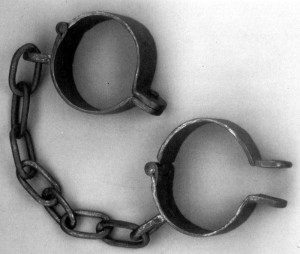The Need for Recognition and Strokes.
What is meant by the term ‘Stroke’?
Transactional Analysis employs the term ‘strokes’ to denote any form of social inter-action where another’s presence is recognised. Therefore any transaction is also an exchange of strokes. While the general term ‘stroking’ might be used to imply close, physical contact, in reality and practice it may present in a number of varied forms.
Eric Berne, founder of The Transactional Analysis movement in Psychotherapy,  maintained that, due to the very nature of our creation and early childhood, strokes were something required by every individual and something leading to feelings of depravation if not received. An individual’s need for strokes is highlighted in his book ‘Games People Play’ where he writes; ‘If you are not stroked, your spinal cord will shrivel up.’ Berne adopted the word ‘stroke’ because it referred to the infants need to be physically touched however it is also a need present in the individual as a grown-up.
maintained that, due to the very nature of our creation and early childhood, strokes were something required by every individual and something leading to feelings of depravation if not received. An individual’s need for strokes is highlighted in his book ‘Games People Play’ where he writes; ‘If you are not stroked, your spinal cord will shrivel up.’ Berne adopted the word ‘stroke’ because it referred to the infants need to be physically touched however it is also a need present in the individual as a grown-up.
Berne also described certain ‘hungers’, universally experience by all, and one of these is recognition hunger, the need to be recognised. Since physical stroking is not always an option for the grown-up, he learns to substitute certain other forms of recognition, such as a compliment or a wave of the hand, for the physical need to be stroked. Berne also acknowledged the individuals need for stimulation, both physical and mental and referred to this as stimulation hunger. A stroke, therefore, in the simplest of terms is a transaction which provides the individual with either stimulation or recognition.
(Image courtesy of worradmu / FreeDigitalPhotos.net)
Different ‘Strokes’ for different folks.
The strokes that we receive can be divided into several different categories, these being; verbal, non-verbal, positive, negative and conditional and unconditional. Verbal strokes can be anything from a quick ‘Hello’ between neighbours over the garden fence to a full blown conversation between good friends while non-verbal strokes range from a nod of the head to a hand shake or a hug. Generally most transactions/exchange of strokes, comprise both those of a verbal and those of a non-verbal nature. Positive strokes, by definition, are strokes that leave the recipient feeling good and provide a positive experience while those of a negative nature are exchanges that one may describe as painful in which the recipient is left feeling perhaps hurt or ‘not ok’.
In ‘Games People Play’ Berne notes that ‘any social intercourse whatsoever has a biological advantage over no intercourse at all.’ It may be clear to see why individuals would seek out positive strokes and steer away from negative ones, however this is not always the case. Given that the desired outcome of a stroke is the satisfaction of our stimulus or recognition hunger it appears not to matter whether the stimulus or recognition received is positive or negative. Think of a child that misbehaves in order to receive attention. The attention will more likely than not be of a negative nature, but any attention is better than no attention at all. If positive strokes are not forthcoming then one has to invent ways to receive negative ones. If a child has learnt that all he can do to provide himself with some form of recognition is behave badly he will continue to do so as, though he will not be left feeling good, he will have at least been recognised or stimulated in some way as opposed to being overlooked or stroke deprived.
 ‘Strokes’ and their place in Therapy.
‘Strokes’ and their place in Therapy.
If we regard this theory in a clinical capacity it is important that when working with clients who demonstrate attention seeking behaviours, the therapist recognises the importance of paying attention to them. Though, perhaps not always healthy, these behaviours provide the therapist with an insight into the clients survival mechanisms, learnt from a young age, and thusly, even if these are to be worked on with a view to altering certain aspects of a clients behaviour, they should be acknowledged and respected.
An important aspect of the work undertaken by a therapist trained in Transactional Analysis is the understanding of how a person gives and receives positive and negative strokes. Because, as infants, we test out behaviours in an attempt to see which ones provide us with strokes of any nature and equally because as adults we still have the same desire to be stroked, once we find which behaviours result in the receipt of strokes we are likely to repeat this behaviour. The more we repeat the behaviour, the more strokes we receive, thus reinforcing said behaviour. Adults will continually mould their behaviours to those that prove the most profitable in providing stokes. It becomes clear now to see why someone would continue to perpetuate behavioural patterns which appear to be damaging. If a person, from a young age has decided that they will seek out negative strokes as an alternative to feeling stroke deprived, as positive strokes were not forthcoming, they will continually find ways to provide themselves with negative strokes and as the stroking reinforces the behaviour that is stroked, so the cycle continues. It is then also possible to use this cycle to create new ways of seeking out strokes and breaking free of self harming patterns. If we were to begin to seek out positive strokes instead of negative strokes, as a grown-up, and we were to receive them with our new behaviour we would be then inclined to seek them out again, repeating this new behaviour.
Changing unhealthy stroking patterns, therefore is possible and a very important goal to be undertaken by client and therapist.